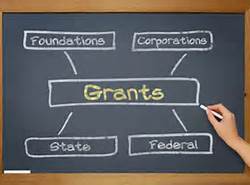 For a long time I have believed that there is an art in knowing when to stop talking. Who among us hasn’t had the experience of thinking: If I had just stopped talking about 2 or 3 sentences ago?? As a leader, this is especially true when we are asked for a direction, an explanation or a question (especially if it is a yes or no question). There really is no need to begin our response with The Book of Genesis, right?
For a long time I have believed that there is an art in knowing when to stop talking. Who among us hasn’t had the experience of thinking: If I had just stopped talking about 2 or 3 sentences ago?? As a leader, this is especially true when we are asked for a direction, an explanation or a question (especially if it is a yes or no question). There really is no need to begin our response with The Book of Genesis, right?
Whether we are leading a staff, an army of volunteers, communicating with funding sources or a Board of Directors, the following are some of my essential observations about good leadership communication:
- Be Clear and Direct
 Hence, The Art of Knowing When To Stop Talking. Be clear about the message and convey it as succinctly as possible. Say it in as simple language as possible and avoid grandiose language. Avoid “triangular” communication, which can lead to problems. For example, triangular communication is involved when the director needs to deliver a message to Mary but instead delivers it to Sam, who may or may not convey it to Mary the way it was intended. Like “whisper down the alley”, communication can become inaccurate or get off topic. Be sure that the intended recipient of a message receives it directly.
Hence, The Art of Knowing When To Stop Talking. Be clear about the message and convey it as succinctly as possible. Say it in as simple language as possible and avoid grandiose language. Avoid “triangular” communication, which can lead to problems. For example, triangular communication is involved when the director needs to deliver a message to Mary but instead delivers it to Sam, who may or may not convey it to Mary the way it was intended. Like “whisper down the alley”, communication can become inaccurate or get off topic. Be sure that the intended recipient of a message receives it directly.
- Listen
 A well-documented fact, successful and effective leaders listen. We cannot obtain information from people, departments or entire organizations if we do all of the talking all of the time. Skilled leaders know how to engage and facilitate others to do the talking in order that they may obtain the information they need. As Mike Myatt of Forbes says, Shut-up and listen!
A well-documented fact, successful and effective leaders listen. We cannot obtain information from people, departments or entire organizations if we do all of the talking all of the time. Skilled leaders know how to engage and facilitate others to do the talking in order that they may obtain the information they need. As Mike Myatt of Forbes says, Shut-up and listen!
- Have an Agenda Think ahead a bit about the beginning, middle and end of the
 communication. It is best to say or write up front in the beginning what the message is about. People tend to remember the beginning and, of course, how something ended but the middle part is more easily forgotten. For these reasons, introduce the intended message right at the beginning, use a wrap-up or summarizing technique at the end and place less critical or salient points in the middle of a message.
communication. It is best to say or write up front in the beginning what the message is about. People tend to remember the beginning and, of course, how something ended but the middle part is more easily forgotten. For these reasons, introduce the intended message right at the beginning, use a wrap-up or summarizing technique at the end and place less critical or salient points in the middle of a message.
- Always Be Respectful
 A key part of being a leader, be as upbeat and positive as possible in all communications, especially when having to deliver an unfavorable message. This may not always be easy to do especially in the face of conflict or adversary but at the end of the day “burning bridges” and destructive relationships will not benefit anyone or further the mission.
A key part of being a leader, be as upbeat and positive as possible in all communications, especially when having to deliver an unfavorable message. This may not always be easy to do especially in the face of conflict or adversary but at the end of the day “burning bridges” and destructive relationships will not benefit anyone or further the mission.
- Non-Verbal Body Language Be mindful of non-verbal body language. Our lips may be saying one thing but our bodies are saying another! When communicating a message, keep in mind things like
 sitting behind a desk (power and control), standing over someone (intimidation) and – worst of all – crossing the arms (non-receptive, closed). Sometimes non-verbal body language speaks louder than the words we use.
sitting behind a desk (power and control), standing over someone (intimidation) and – worst of all – crossing the arms (non-receptive, closed). Sometimes non-verbal body language speaks louder than the words we use.
- The 5:1 Rule Simply put, the 5:1 rule is that for every “constructive” message, there needs to be 5 positives.
 It is easier for leaders to praise rather than criticize: Although you need to gain speed in completing your daily reports, you are on time, dressed appropriately for the job, you are respectful to consumers, they look forward to seeing you and you have a great attitude!
It is easier for leaders to praise rather than criticize: Although you need to gain speed in completing your daily reports, you are on time, dressed appropriately for the job, you are respectful to consumers, they look forward to seeing you and you have a great attitude!
- Technology Gone are the days when we dictated letters and someone else typed them for us. Today, if we need a letter, we type it ourselves – and more likely, we email or text it. In the age of electronics, it behooves leaders to use their smart phones and iPads wisely. Add Facebook and Twitter into the mix and we
 have a virtual jungle of communication with staff, Board members, funding sources and volunteers. In addition, know the preferred method of communication of the audience. This may translate into the same message being broadcasted by several different methods (e.g., website, email, Facebook) if the demographics of the audience are diverse. While many of our older donors prefer to receive their newsletters and annual reports in printed copy, the Gen X crowd wants to be texted or tweeted. Know how to best communicate with the intended audience.
have a virtual jungle of communication with staff, Board members, funding sources and volunteers. In addition, know the preferred method of communication of the audience. This may translate into the same message being broadcasted by several different methods (e.g., website, email, Facebook) if the demographics of the audience are diverse. While many of our older donors prefer to receive their newsletters and annual reports in printed copy, the Gen X crowd wants to be texted or tweeted. Know how to best communicate with the intended audience.
References:
Myatt, Mike (April 4, 2012). 10 Communication Secrets of Great Leaders. Forbes. Retrieved on August 4, 2014, from http://www.forbes.com/sites/mikemyatt/2012/04/04/10-communication-secrets-of-great-leaders/
Craemer, Mark (December 29, 2011). 10 Tips to Improve Workplace Communication. Seattle pi. Retrieved on August 4, 2014, from http://blog.seattlepi.com/workplacewrangler/2011/12/29/10-tips-to-improve-workplace-communication/




























































